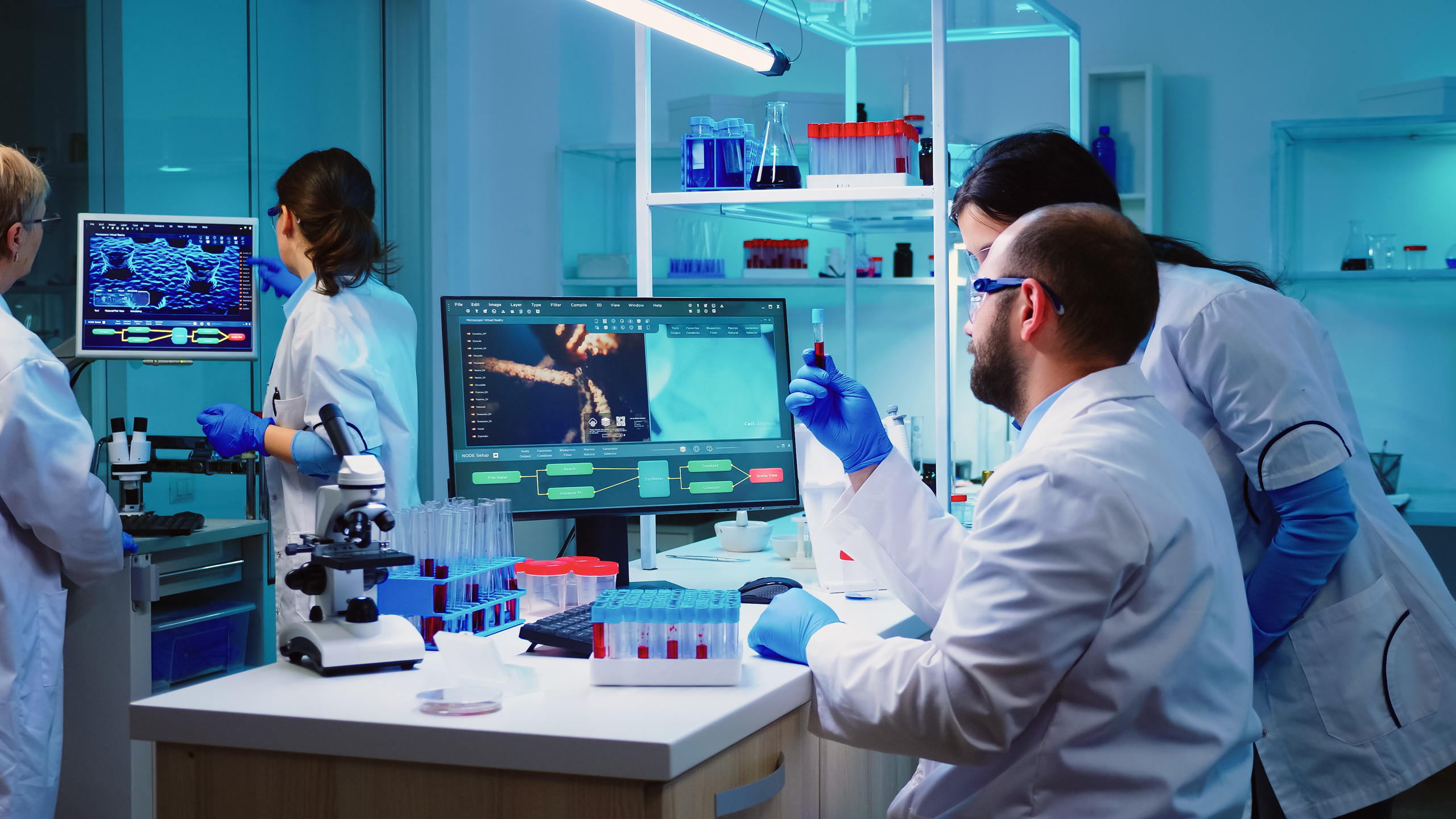Menu

Duration: 1.00 Hrs
Course Level: Intermediate
Languages: English
Capability: Audio, Video, MobileReady
This course describes the major tasks associated with performing analytical procedures in a chemical lab. It discusses qualitative and quantitative analyses, accuracy and precision, validation of procedures, and the use of standards. It describes the following basic steps for performing an analysis: handling samples; choosing and performing appropriate analytical procedures; and collecting and reporting data, including calculating percent recovery and relative percent difference.
By the end of this course, you will be able to:
Duration: 1.00 Hrs
Course Level: Intermediate
Languages: English
Capability: Audio, Video, MobileReady
This course explains how sample components can be separated by gas chromatography. It discusses the basic principles of the gas chromatography process and describes the major parts of a typical gas chromatography system, including an auto sampler, packed columns, capillary columns, a flame ionization detector (FID), and a data system. It describes the major steps of a chromatographic analysis, including sample preparation and injection, sample separation, component detection, and data processing. It also discusses the basic features of a typical gas chromatogram and describes how the information presented on a gas chromatogram is used for qualitative and quantitative analysis.
By the end of this course, you will be able to:
Duration: 1.00 Hrs
Course Level: Intermediate
Languages: English
Capability: Audio, Video, MobileReady
The purpose of this course is to present a fundamental treatment of how to perform infrared (IR) analysis. The course starts by describing the basic concepts underlying IR, and then describes several methods used to prepare samples for analysis. After the major components of a typical IR spectrometer are identified, a demonstration of how to perform IR analysis is presented. The course concludes by introducing the graph used to show the results of an analysis, describing the characteristics of a typical IR spectrum, and identifying different ways IR results can be used in chemical plants.
By the end of this course, you will be able to:
Duration: 1.00 Hrs
Course Level: Intermediate
Languages: English
Capability: Audio, Video, MobileReady
This course introduces participants to the basic principles associated with ions as well as laboratory procedures that depend on the presence of ions. The course includes an explanation of how ions are formed and how they can be represented. In addition, the course describes how a pH meter can be used to measure the acidity or alkalinity of a liquid and how a conductance meter can be used to measure a liquid’s ability to conduct current. The course also includes an explanation of the process of ion exchange chromatography.
By the end of this course, you will be able to:
Duration: 1.00 Hrs
Course Level: Intermediate
Languages: English
Capability: Audio, Video, MobileReady
This course demonstrates some math fundamentals necessary to perform various calculations in the lab. The metric (SI) measurement system is described and practical instruction is given on the conversion to English units and vice versa. Exponential numbers are explained, and participants are shown how to perform arithmetic operations with them. Also, the rules for significant figures and rounding are described. Converting between fractions, decimals, and percents is demonstrated; and finally, ratios and proportions are explained and examples of their practical use are shown.
By the end of this course, you will be able to:
Duration: 1.00 Hrs
Course Level: Intermediate
Languages: English
Capability: Audio, Video, MobileReady
This course describes how to perform calculations that are involved in preparing some types of solutions commonly used in labs. Specifically, it discusses calculations required for preparing dilutions, mass percent solutions, volume percent solutions, molar solutions, and normal solutions.
By the end of this course, you will be able to:
Duration: 1.00 Hrs
Course Level: Intermediate
Languages: English
Capability: Audio, Video, MobileReady
This course introduces basic concepts of statistics and statistical analysis that can be applied to lab work. It defines terms associated with basic statistical concepts and explains how statistical process control (SPC) can be used in labs. It explains how control charts (focusing on an individual X chart) can be used to monitor the performance of analytical systems and interpret the results of analyses.
By the end of this course, you will be able to:
Duration: 1.00 Hrs
Course Level: Intermediate
Languages: English
Capability: Audio, Video, MobileReady
This course describes the process of mass spectrometry and the analytical instrument that is used to perform this process. The focus is on a typical bench top gas mass/mass spectrometry (GC/MS) system. The system featured in this course includes a gas chromatograph with a capillary column, directly coupled to a mass spectrometer. The course explains the basic principles of mass spectral analysis, identifies the major parts of a typical GC/MS system, and describes the major steps of sample introduction, ionization (by electron-impact ionization), fragmentation, separation by mass (in a quadruple mass analyzer), detection of ions (by an electron multiplier), and data processing. The basic features of a typical mass spectrum and a typical total ion chromatogram are also described, and the use of the data system for controlling the GC/MS and for data processing, including performing library searches of mass spectra, is discussed.
By the end of this course, you will be able to:
Duration: 1.00 Hrs
Course Level: Intermediate
Languages: English
Capability: Audio, Video, MobileReady
In this course, the basic principles and operation of optical analytical instruments are discussed. This course looks at the basic principles, operation, and use of colorimeters, polarimeters, turbidimeters, nephelometers, and refractometers.
By the end of this course, you will be able to:
Duration: 1.00 Hrs
Course Level: Intermediate
Languages: English
Capability: Audio, Video, MobileReady
This course is designed to introduce participants to the analytical technique of UV-visible spectroscopy. The course covers the properties of the electromagnetic spectrum and the basic principles of UV-visible spectroscopy as well as terms used to describe this analytical technique. The course also introduces the equipment used to perform UV-Visible spectroscopy and covers the way typical UV-visible spectroscopy analysis can be performed.
By the end of this course, you will be able to: